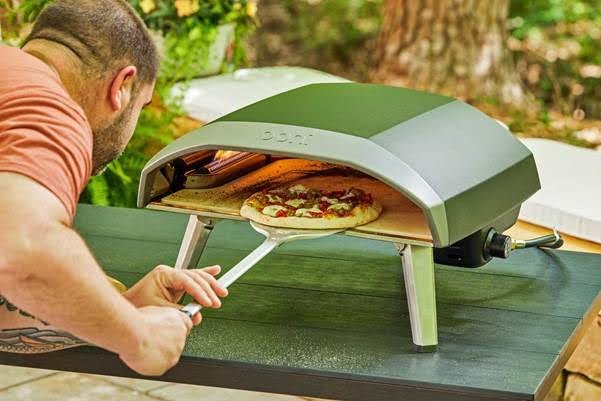In both home and commercial kitchens, one of the most indispensable tools is the stand mixer. Whether you’re kneading dough for artisanal bread, whipping egg whites to stiff peaks, or mixing cookie batter for a bakery, the stand mixer size you choose plays a critical role in the outcome. Too small, and you risk overflow and motor stress. Too large, and you waste energy and counter space.
So how do you determine the best stand mixer size for your needs?
In this comprehensive guide, we’ll walk you through the factors that impact mixer size selection, the differences between residential and commercial use, capacity conversions, bowl depth and width considerations, and how Mirabake—a leading stand mixer manufacturer—has engineered solutions for kitchens of all sizes.
Explore the full lineup of professional kitchen machinery at mirabake.com for mixers built to meet your exact size and performance needs.
Why Stand Mixer Size Matters
The stand mixer size determines:
- How much you can mix at once
- The weight and power of the mixer
- How easily it fits into your kitchen layout
- Which types of recipes it can handle effectively
A mismatch between mixer size and intended usage leads to poor results, equipment strain, and inefficiency.
Understanding Mixer Capacity: What Does “Size” Mean?
When people talk about stand mixer size, they’re usually referring to bowl capacity, measured in liters or quarts. However, size also includes:
- Motor power(watts)
- Mixer dimensions
- Weight
- Bowl geometry
For instance, a 5-liter mixer with a narrow bowl might handle dough differently than a 5-liter model with a wider bowl.
Popular Stand Mixer Sizes
Here’s a breakdown of standard mixer sizes:
| Bowl Capacity | Ideal For | Common Use Cases |
| 3–4.5L | Small households | Cakes, frosting, light dough |
| 5–6.5L | Medium families & serious home bakers | Bread, cookies, pastry |
| 7–8L | Small bakeries, prosumers | Pizza, brioche, multi-batch prep |
| 10L+ | Commercial kitchens | High-volume dough, pastries, whipped cream |
At mirabake.com, you’ll find all these sizes and more, custom-designed for specific kitchen environments.
Residential vs. Commercial Mixer Size
Choosing between residential and commercial stand mixers hinges on:
- Batch size
- Usage frequency
- Space availability
- Attachment needs
- Price point
Residential Stand Mixers
- Bowl size: 3–6.5L
- Motor: 300–1000W
- Designed for aesthetics and versatility
Commercial Stand Mixers
- Bowl size: 7–20L or more
- Motor: 800–2000W
- Heavy-duty design, optimized for durability
Mirabake offers both classes to suit everyone—from home baking enthusiasts to industrial food manufacturers.
How to Choose the Right Stand Mixer Size for Your Kitchen
To find your ideal stand mixer size, consider:
- How many people you cook for
- What you cook most often(e.g., bread vs. cake)
- How much counter space you have
- How often you bake or prep
- Whether you need portability or a fixed location
Tip: Always size slightly above your typical batch size to allow room for expansion.
Mixer Bowl Dimensions and Geometry
Two mixers can both be 6L but perform differently based on:
- Bowl depth
- Bowl width
- Attachment reach
- Whisk or beater shape
Mirabake’s engineers fine-tune bowl dimensions to maximize ingredient reach, aeration, and stability.
Volume vs. Weight in Stand Mixer Size
Many bakers measure ingredients by weight (grams/kg) while bowl size is listed by volume (liters). Here’s an approximate conversion:
- 1 liter of flour = ~600g
- A 5L bowl can mix ~2.5kg of dough safely
- A 10L bowl can handle up to 6kg of dough (depending on hydration)
Always leave 20–30% headroom to avoid spillage and allow thorough mixing.
Stand Mixer Size and Motor Power Correlation
Larger bowls require stronger motors.
- 5L mixer: 300–500W motor
- 5–6L mixer: 800–1000W
- 8–10L mixer: 1200–1500W
- 15L+ mixers: 1500–2000W
Mirabake matches every bowl with the right motor class using in-house performance testing.
When to Size Up or Down
Size Up If You:
- Bake for large families or events
- Want to avoid mixing multiple batches
- Frequently mix heavy doughs
Size Down If You:
- Have limited storage
- Only bake occasionally
- Prefer quick, small batches
The Stand mixer size should align with your usage habits, not just your aspirations.
Mirabake’s Stand Mixer Range and Size Options
Mirabake offers a wide range of capacities:
| Mixer Model | Bowl Size | Power | Ideal Use |
| MBK300 | 3.5L | 500W | Light home baking |
| MBK600 | 6L | 1000W | All-purpose household |
| MBK800 | 8L | 1300W | Prosumers, home businesses |
| MBK1000 | 10L | 1500W | Small bakery setups |
| MBK1500 | 15L | 1800W | Full commercial kitchens |
Explore their full lineup at mirabake.com and request custom sizing or OEM branding.
Attachment Compatibility and Size Considerations
Attachments such as dough hooks, flat beaters, whisks, and meat grinders are size-specific.
- A 3.5L hook won’t reach the bottom of a 10L bowl
- Larger bowls require reinforced attachments
- Higher torque demands stronger gearboxes
Mirabake produces industrial-grade attachments with size-matched compatibility, ensuring consistency across batches.
Storage, Counter Space, and Portability
Don’t underestimate the physical footprint:
- 3–5L mixers weigh ~5–8kg
- 8–10L mixers can exceed 12–18kg
- Commercial units may require dedicated surfaces or trolleys
Measure your countertop dimensions before purchase. Mirabake provides technical spec sheets for every model on mirabake.com.
Mixing Multiple Batches vs. One Large Batch
With smaller mixers, you may need to:
- Mix multiple batches for large orders
- Clean the bowl between sets
- Divide ingredients manually
With larger mixers:
- One large batch = less time
- Lower total energy use
- Greater consistency in results
But, keep in mind—a half-filled 15L bowl might not mix efficiently. Choose a Stand mixer size that balances volume and practicality.
Choosing the Right Size for Dough Mixing
Dough requires special attention:
- Dough expands, so bowl capacity must be higher
- Requires more torque than batters or creams
- Excess dough can overload motors
Mirabake’s MBK800 and MBK1000 models are specially reinforced for dough processing—combining large bowls with high-torque motors.
Future Trends: Smart Size Optimization
Modern stand mixers will increasingly feature:
- Load sensorsto prevent overfilling
- Auto-adjusting speed based on bowl size
- Digital interfacesthat recommend batch size
- Swappable bowl sizesfor flexible use
- IoT integrationfor recipe syncing
As a Stand Mixer factory, Mirabake is investing in smart size optimization to reduce waste and boost productivity.
Conclusion
The right Stand mixer size isn’t just about how much batter you can make. It’s about efficiency, durability, and precision in your kitchen workflow. Whether you’re a home cook, pastry chef, bakery owner, or OEM buyer, understanding mixer sizes helps you maximize value and performance.
Mirabake, with its global reach, innovative engineering, and customizable product lineup, offers the ultimate resource for selecting the perfect mixer. Visit mirabake.com to explore size options, download technical specs, and learn how the right stand mixer can revolutionize your kitchen operations.



